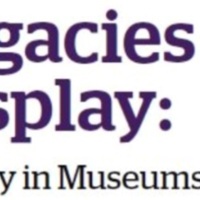
River Road African American Museum
The River Road African American Museum (RRAAM) was originally housed at Tezcuco Plantation, and opened in 1994. Due to a fire, it was relocated to its present site, a restored Caribbean-style cottage from the 1890s, in 2003. Before the museum opened, there was nowhere that charted the narrative of African American experience in the rural counties along the Mississippi. It developed its collections through donations; of buildings, objects, family documents, photographs, maps and pieces of art. The RRAAM opened with the aim of educating its visitors about the lives of Africans Americans who lived and worked on the sugar and rice plantations in the region. It has since been recognised as an international repository for African American culture in Louisiana. It hosts a varied public programme alongside its permanent displays, including touring exhibitions, concerts, lectures and school workshops.
The museum's website outlines its focus as 'more than just a slavery museum'; its key themes throughout the permanent exhibits are freedom, resilience and reconciliation. Five of the museum's displays focus on the contribution of African influence in key areas of Louisiana culture, including jazz, cuisine, medicine, art and inventions.
One key exhibit features a collection of slave inventories from local plantations- the museum lists the names of over 5,000 enslaved people. 'Free People of Colour' follows on from this as an exhibit which showcases the hundreds of people who obtained their freedom in Ascension. Outside, the RRAAM has built a 'Freedom Garden' which reveals the history of Louisiana's involvement in the Underground Railroad using a range of plants that would have been cultivated by the enslaved, both in Africa and on the plantations.